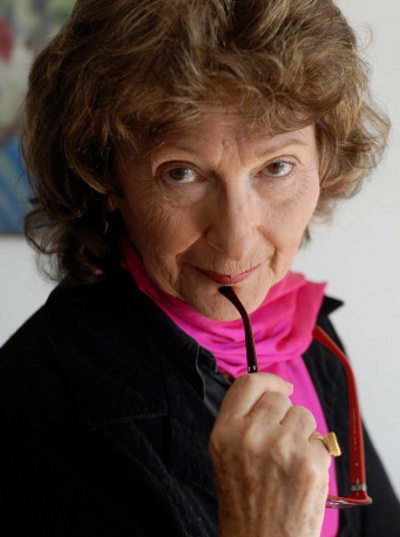
Shin Shifra is a major poet, novelist, essayist, translator, scholar and educator. Her local and international awards and prizes attest to the value of her contribution to Hebrew culture.
Shin Shifra’s creative output is a powerful projection of her sense of being a child of the place. The map of her homeland in her mind is not confined to the borders of modern Israel; it extends to the whole of the ancient Middle East, including Mesopotamia. She reveals a perception of the links between the cultures, climate, geography, flora and fauna of the region as if they are joined by a strand of DNA that loops and curls thousands of years into the past. With characteristic eloquence, Shifra launches into the subject of her physical and spiritual sense of belonging in this region.
“When I visit Europe, in summer, I feel very uneasy when it rains. For me, rain belongs in autumn and winter, it comes to feed and revitalize nature.”
“Surely European rain is also part of your culture?” I prod.
“Europe was an interruption in the line! We’re children of the East. If we don’t recognize that the mythology of the ancient Middle East is part of the cultural interchange in the whole region, we’ll lose it all, we’ll be in danger of becoming a culturally foreign implant.”
“That’s already been said by our enemies.”
“Foreign gods, whether Canaanite or American, have always tempted us, but we have never relinquished our connection to this land. We are still children of the region whose recorded history began with the invention of writing in Mesopotamia, at least 2000 years before we wrote the Old Testament. Hebrew is a sister language to Akkadian, the mother of Semitic languages. The name of the modern Hebrew city, Tel Aviv, is first mentioned in Ezekiel 3:15 and bears direct semantic relation to the Akkadian Til Abubi: flood ruins. Read Utnapishtim for Noah and set the tale in Babylon long before the bible was written and you have one example of that shared cultural root.”
I look around the room at the family portraits of bearded elders and the beautiful artifacts of unmistakably European Jewish origin and hark back to my earlier question, “What about the European root?”
“My mother came to Ottoman Palestine from Russia and my paternal grandparents also arrived in the 19th century. I remember going with my father to the house in the Old City of Jerusalem, where he was born. These are roots, but my profoundest sense of belonging goes beyond recent family history.”
“Do you ever feel challenged on this issue?”
“For me the issue of identity is simple: my beginnings and my continuity are here. I remember father as he was when I was a little girl in the 1930s – a bearded man in a pith helmet -- teaching the Hebrew names of flowers and insects to a group of children on a hiking trip. His orthodoxy never conflicted with his liberal outlook. He and my mother spoke Arabic when they didn’t want me to understand them. Even before and after the Arab riots in the thirties, we visited people he knew in Arab villages. I remember standing in front of a house with raindrops falling on our heads from the creeper by the door, and stepping inside to drink mint tea with the man my father had come to see. He didn’t come riding on ideology, he came as one who belonged here naturally, in his bones, but I live like a stranger in my homeland.”
“Tell me more about your quest for connection with the ancient cultures of our area.”
“I believe that our society needs to remove the stereotypes in the way we see ourselves and our place in world history. We are a legitimate part of this region, but the emphasis is wrong. We gloss over the contributions made by other ancient cultures that existed here. It’s time to freshen our perspective.”
“You took the matter into your own hands with your school textbook, Chapters from Mesopotamian literature and documents relating to the Old Testament.”
“And I’m delighted that it has been accepted into the school syllabus! Alongside Hebrew sources, the book contains my translations of relevant texts from Mesopotamian myths, literature, history and philosophy. I hope it will open some avenues of understanding for the children.”
Shifra has also rewritten the Gilgamesh epic for young Hebrew readers. Her major work, however, is her monumental translation, In Those Distant Days.
“It’s my life-work,” she says. “It took me 15 years. I studied the Sumerian and Akkadian languages and sources in order to translate the treasures of Sumerian literature and trace their influence on Hebrew prosody and mythology.”
After a moment, she resumes the thread, “Hebrew and Arabic are closest to Akkadian. Hebrew meter, verb roots, inflection and sound are very similar to the ancient language. Hebrew translation contributes what no other language can give to the appreciation of Sumerian literature.”
Our talk has taken place in the grueling midsummer month named after Tammuz in the Hebrew and some Iraqi calendars. His spirit has woven itself into our conversation, but it is just one thread of many we could have followed. However, Shin Shifra’s writing exceeds the scope of a single interview.
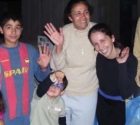 ESRA ASHKELON DONATED GOODS
ESRA ASHKELON DONATED GOODS  DEFIANCE TEL AVIV STYLE
DEFIANCE TEL AVIV STYLE 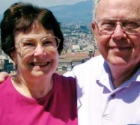 THE SPIRIT OF ESRA-JULES AND PERLA FOX- EXCEPTIONAL BENEFACTORS
THE SPIRIT OF ESRA-JULES AND PERLA FOX- EXCEPTIONAL BENEFACTORS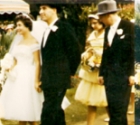 Bridesmaid recalls a very special day 59 years ago
Bridesmaid recalls a very special day 59 years ago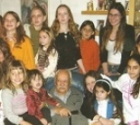 Harry Berman
Harry Berman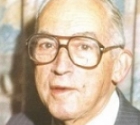 Sam Levin
Sam Levin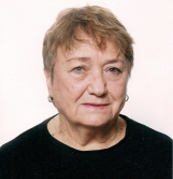 Riva Rubin
Riva Rubin